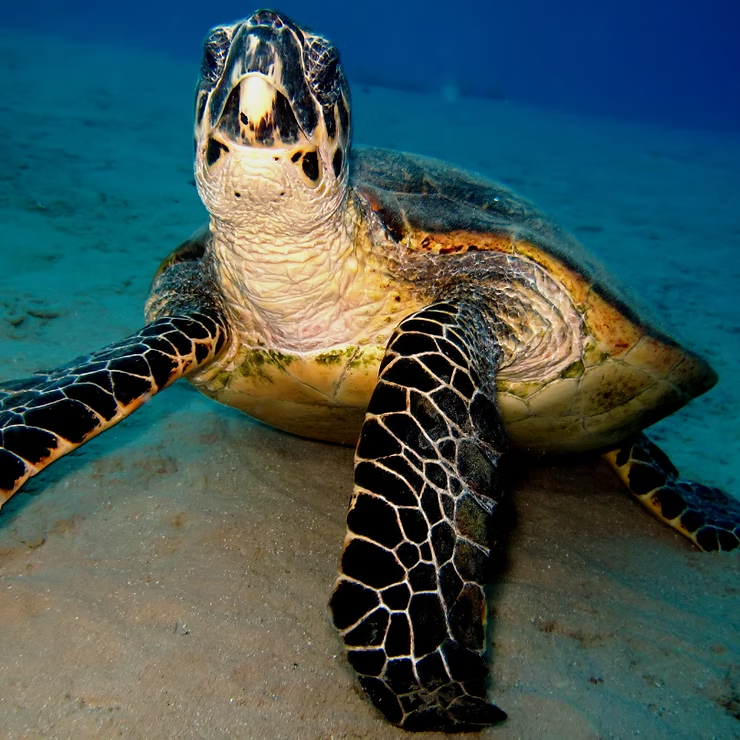Introduction
The Hawksbill Turtle is a critically endangered species known for its beautiful, colorful shell and vital role in marine ecosystems. Understanding their behavior and conservation needs is essential for protecting these remarkable creatures.
Appearance
Hawksbill Turtles have a narrow, pointed beak resembling a hawk’s, and a unique shell with overlapping scutes. Their carapace ranges from 60 to 90 cm in length, weighing 45 to 90 kg, and shows brown, amber, and yellow tones.
- Size: Small to medium
- Beak: Narrow and pointed
- Shell: Overlapping scutes forming a tortoiseshell pattern
- Color: Brown, amber, yellow
Habitat
Hawksbill Turtles inhabit tropical and subtropical oceans, frequenting coral reefs, rocky areas, and shallow coastal waters. They rely on healthy reefs for shelter and food, and migrate between feeding and nesting grounds.
Diet
These turtles primarily consume sponges, which comprise 70-95% of their diet, along with jellyfish, algae, sea anemones, and crustaceans. By controlling sponge populations, they maintain coral reef health and biodiversity.
- Juveniles feed on small invertebrates
- Adults focus mainly on sponges and marine organisms
- Diet varies by location and food availability
Reproduction
Hawksbill Turtles reach sexual maturity at 20-30 years. Females return to natal beaches to lay 100-150 eggs in sand nests. Hatchlings face high predation but instinctively head toward the ocean guided by moonlight.
Importance in Ecosystems
By feeding on sponges and dispersing seeds of seagrass and algae, Hawksbill Turtles help maintain balanced and diverse coral reef ecosystems. Their presence indicates overall reef health.
Conservation Status
Critically endangered, Hawksbill Turtle populations have declined over 80% due to habitat loss, poaching, pollution, and climate change. Conservation efforts include marine protected areas, awareness campaigns, and enforcement of wildlife laws.
- Reduce plastic waste
- Support conservation organizations
- Promote responsible tourism
- Spread awareness about their importance
Threats
Key threats include habitat destruction, illegal shell trade, climate change, and plastic pollution. Addressing these challenges is crucial for survival and long-term conservation.
Interesting Facts
Shell Characteristics
- Overlapping scutes create a tortoiseshell pattern
- Shell length up to 1.2 meters
- Color varies with age and environment
Migration Patterns
- Travel thousands of miles between nesting and feeding sites
- Navigate using magnetic fields, ocean currents, and sunlight
- Protection of habitats ensures safe migration
Long Lifespan
Hawksbill Turtles can live up to 50 years, reaching sexual maturity slowly and adapting to environmental changes over decades.
Unique Feeding Habits
- Specialized in consuming sponges, even toxic species
- Beak-shaped mouth allows access to coral crevices
- Control sponge populations to protect coral reefs
How You Can Help
- Reduce plastic use and recycle properly
- Support conservation organizations through donations or volunteering
- Promote responsible tourism near nesting areas
- Educate others and spread awareness
Conclusion
The Hawksbill Turtle is a vital marine species with unique adaptations and an essential role in coral reef ecosystems. Immediate conservation action is necessary to protect them from extinction and ensure their continued contribution to marine biodiversity.

